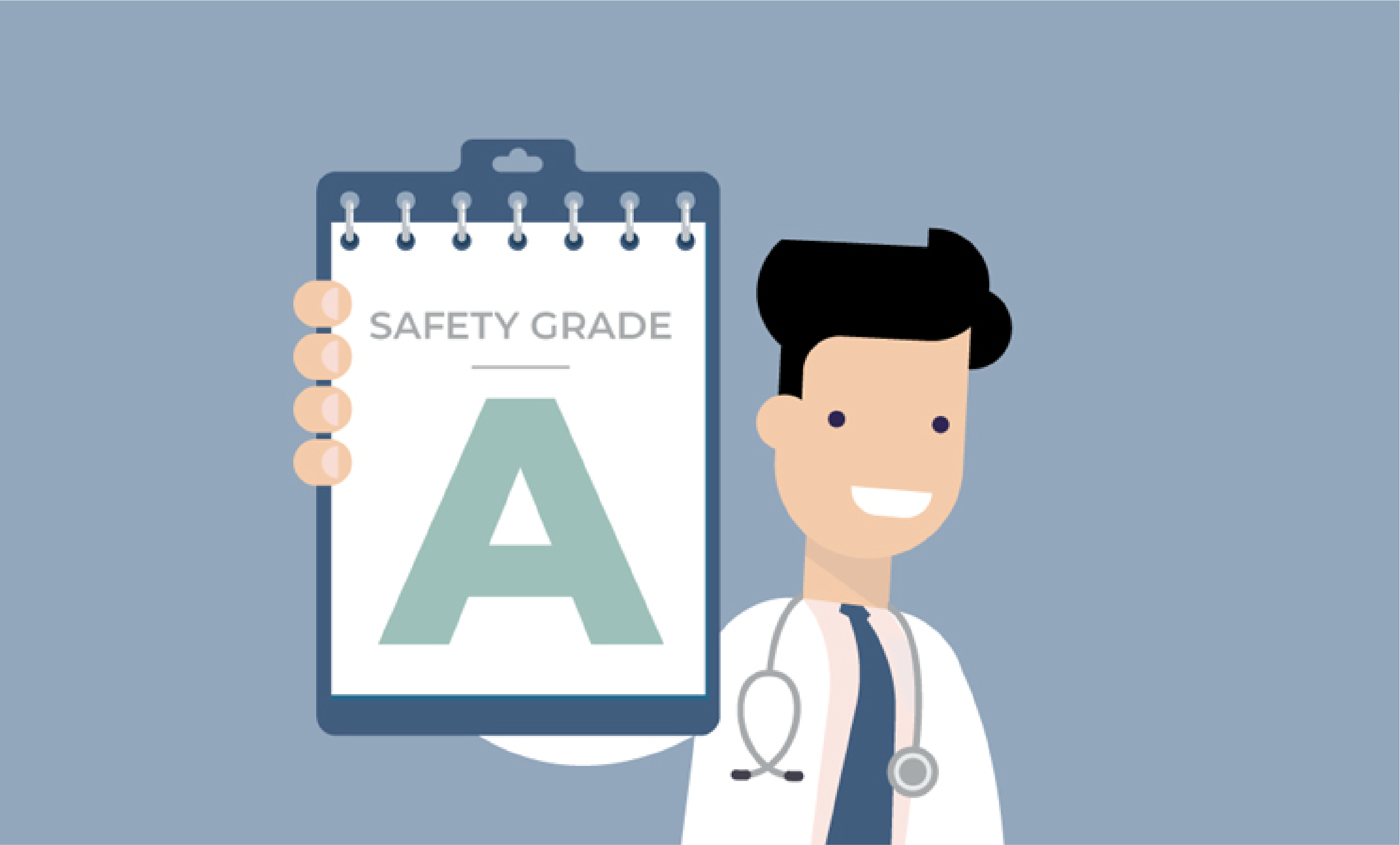In a world of seemingly pervasive negativity, it’s always a pleasant change to share good news. We recently received some from one of our local Massachusetts hospitals when UMass Memorial – Marlborough Hospital was awarded the top grade of “A” in the 2019 Fall Hospital Safety Guide. The annual survey, sponsored by Leapfrog, is designed to rate how well hospitals protect patients from accidents, errors, injuries, and infections.
According to the Leapfrog website, The Safety Grade, an independent industry watchdog, “is becoming the gold standard measure of patient safety, cited in MSNBC, The New York Times, and AARP The Magazine.” The Safety Grade is free to the public and designed to provide patient-consumers information they can use when selecting a hospital for their healthcare needs. Kudos to UMass Memorial – Marlborough Hospital for shooting to the top of the class of the more than 2600 hospitals that were graded.
While that particular achievement is worthy of celebration, the overall results raise some concerns. Only a third of the graded hospitals joined UMass Memorial – Marlborough Hospital in earning the top grade. A quarter of the hospitals received a “B” and nearly half (43%) received a “C” or less. Frighteningly, one percent (approximately 26 hospitals) received an “F.”
The Safety Grade uses national performance measures from the Centers for Medicare & Medicaid Services (CMS), the Leapfrog Hospital Survey, and other data sources to compile its results. The Safety Grade includes 28 measures, all currently in use by national measurement and reporting programs and the survey’s methodology has been peer reviewed and published in the Journal of Patient Safety. These metrics are combined to calculate a single composite score that represents a hospital’s overall performance in keeping patients safe from preventable harm and medical errors. In addition, supplemental data from a secondary data source, the American Hospital Association (AHA), is used to give hospitals as much credit as possible towards their safety grades.
Medication Administration Safety Key Component
Of the 28 scoring categories, several relate directly to safe medication administration. One specifically calls out “Bar Code Medication Administration” and several others relate to doctor, nurse, and staff communication – often an important aspect of preventing adverse drug events (ADE). Another series of measures are taken from the National Quality Forum (NQF) Safe Practice Measures which include Safety Leadership, Risks and Hazards, Nursing Workforce – all of which can come into play when trying to ensure safe medication administration.
In the area of “Practices to Prevent Errors,” which include safe medication administration and communication about medicines, the average hospital score was 77.1 out of 100. Incredibly, one hospital received a 5 out of 100. These dismal results may help explain the disturbing numbers we continue to see when it comes to medication dosing.
According to the FDA, one person dies, and 3,500 people suffer harm every day as a result of medication delivery errors. A study in a large, tertiary care academic medical center revealed that more than one out of every four patients treated during medical emergencies suffered the effects of medication administration errors.[1] Approximately one out of every five critical care medication errors are potentially life threatening and almost half require additional life-sustaining treatments.[2] A study by the U.S. Department of Health and Human Services (HHS) reported that 30 percent of Medicare beneficiary inpatients suffered an Adverse Drug Event (ADE) in 2011. The Agency for Healthcare Research and Quality (AHRQ) has estimated that ADEs occurred in nearly 1.9 million inpatient stays, with impacts ranging from little to no harm all the way to death.[3]
Technology can make the difference
One of the ways to protect patients, and improve survey grades along the way, is to take advantage of technology that can help ensure that clinicians always deliver the proper medication dose. Digital dosing solutions like SafeDose provide clinicians with the information they need at the point of care to make sure every patient receives the correct and properly administered dose. SafeDose simplifies the medication administration process and provides clinicians with the confidence that they are doing the right things when it comes to delivering needed drugs.
The goal of surveys and reports such as the Leapfrog Hospital Safety Grade, is to educate and encourage consumers to consider safety when selecting a hospital for themselves or their families. In an increasingly competitive market, the grades hospitals receive – and which are publicly available and widely circulated – could be another strong incentive to make safety in general, and medication administration in particular, a priority. For the sake of all our patients, we can only hope that is the case.
[1] Gokhman R, et all, Resuscitation. 2012; 83: 482-487
[2] Leape LL, Brennan TA, Laird N, et al. The nature of adverse events in hospitalized patients. Results of The Harvard Medical Practice Study II, New England Journal of Medicine 1991: 324:377-384
[3] Health Research & Educational Trust (February 2017). Adverse Drug Events Change Package: 2017 Update. Chicago, IL: Health Research & Educational Trust
